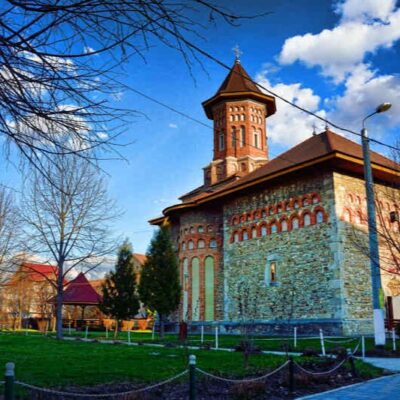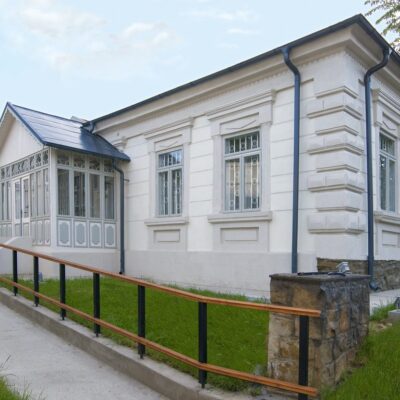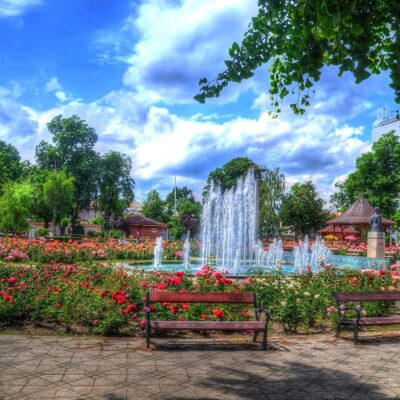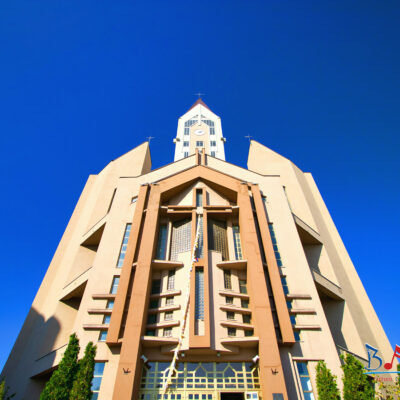The city of Bacău has a strong cultural identity, evidenced by the many museums, memorial houses, buildings and historical monuments it houses. The places of worship in this region are, to the same extent, representative elements, carrying a special symbolism. The green spaces in this municipality are also numerous and offer tourists the opportunity to spend quiet moments in carefully tended-to settings.
Archaeological researchers have shown that in the 14th century Bacău had the status of a fair, and in the 15th century it was a well-established crafts and commercial centre.
The first official mention of the locality dates from 1408. During the XVII-XVIII centuries, Bacău was distinguished as a royal fair and was one of the most important cities in the historical region of Moldova. The interwar period was relatively prosperous for the city, at least in terms of urban development. It acquired the status of municipality in 1968.
Bacău is the residence of the homonymous county and is positioned in the northeast of Romania. The city is located at the intersection of the rivers Bistrița and Siret. The most important units of landscape are the Moldavian Sub-Carpathians in the west and the Tutovei Hills in the Moldavian Plateau in the east.
In the vicinity of the city there are several nature reserves represented by the lakes: Gârleni, Bacău, Răcăciuni and Lilieci. Bacău borders Neamț to the north, Vaslui to the east, Vrancea to the south, Covasna to the southwest, and Harghita to the west.
Is an ensemble declared a historical monument that includes the following elements: the ‘Precista’ Church (The Church of Assumption), ruins of the royal house and ruins of the tower. The ensemble dates back to the 15th-16th centuries and has witnessed many historical events of great importance for the Romanian people. Alexandru-Vodă, the son of Stephen the Great, lived here.

This is the place where the great national poet George Bacovia lived for 22 years. Visitors can explore carefully restored rooms that bring to the forefront the atmosphere and influences that inspired his remarkable works. Among the exhibits in the museum are manuscripts, heritage pieces, and furniture. It is a unique way to delve into the universe of a genius and to see how houses were arranged in the 19th century, suitable for those passionate about literature and art in general.

It stretches over one hectare and was organized in 1850. The multitude of roses creates a conducive space for relaxation and outdoor walks. Here, there is also an extremely rare specimen of the Ginko biloba species. The park is located in the city center, on Mihail Kogălniceanu Street.

It is a fascinating destination for nature lovers and biodiversity enthusiasts. Located at 3 Popa Șapcă Street, the museum features four permanent exhibitions of exotic and indigenous fish, ornamental and singing birds, pigeons, and amphibians in a natural and adapted environment. Visitors have the opportunity to explore diverse ecosystems, making it an educational and relaxing experience for the whole family.
Visiting hours: Tuesday – Sunday: 08:00 – 17:00
Ticket prices:
10.00 LEI/person
2.50 LEI/preschoolers, students
3.00 LEI/group minimum 10 persons, pensioners

Built in the Neo-Gothic style, it impresses with its modern architecture and dimensions. Inside, an atmosphere of solemnity and tranquility delights those who visit this sacred place, while the refined interior decor complements the spiritual experience of those who step inside. It is a place of prayer and contemplation, as well as an important symbol of the Catholic community in Bacău. The building is located at 2A Ana Ipătescu Street.

Bacau is served by the “George Enescu” International Airport, which operates flights that have both national and international destinations (Italy, Belgium, Spain, Great Britain).
Trains leave Bacău train station every day for most places and cities in the country. At the same time, it is a transit place for trains from Ukraine, Russia and Bulgaria. To check the train schedule, access this site.
If you prefer to travel by bus or minibus, you will find all the necessary information for this here: bus stations and stops, departures and arrivals, destinations.
If you want to go from Bucharest to Bacău by car, you need to take the E85.
